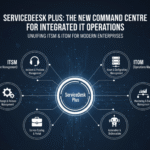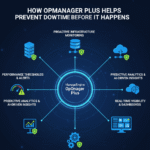Why Is Technology Important For Health Professionals
The healthcare sector has undergone a significant transformation due to technological advancements. Technology has revolutionized the way doctors work and how they care for patients. This article explores some of the ways in which technology has benefited doctors in their profession, ultimately improving patient outcomes.
Easy Access to Medical Prescriptions
One of the most significant advantages of technology in healthcare is the easy access to medical prescriptions. With websites like PrescriberPoint, doctors can now search for reliable information on a specific prescription before administering it to the patient. This process is much more efficient than the traditional method of making numerous phone calls and sifting through paperwork. The internet has made it easier to access medical information, allowing doctors to provide the best treatment possible.
Additionally, e-prescribing systems have streamlined the prescription process, reducing errors and improving patient safety. These systems allow doctors to send prescriptions electronically to pharmacies, ensuring that patients receive the correct medication promptly. This not only saves time but also reduces the risk of medication errors that can occur with handwritten prescriptions.
Accessing Patient Records
Technology has also simplified the process of accessing patient records. In the past, hospitals kept patient records in physical form, making it challenging to locate a specific record. Doctors and front desk officers had to sift through piles of files, which was time-consuming and prone to errors. However, Electronic Health Records (EHRs) have made it easier to store, retrieve, and update patient records. EHRs have also made it possible for doctors to access a patient’s medical history, which is crucial in providing appropriate treatment.
EHRs offer several advantages, including:
- Improved Coordination of Care: EHRs allow multiple healthcare providers to access a patient’s medical history, ensuring that everyone involved in the patient’s care is on the same page. This is particularly important for patients with chronic conditions who see multiple specialists.
- Reduced Redundancies: By having access to a patient’s complete medical history, doctors can avoid ordering duplicate tests and procedures, saving time and resources.
- Enhanced Data Security: EHRs are equipped with security features that protect patient information from unauthorized access, ensuring patient confidentiality.
Reducing Medical Errors
Medical errors are a growing problem and the third leading cause of death in healthcare facilities in the United States, resulting in approximately 98,000 deaths annually. However, technology has helped reduce errors in the medical field. Clinical Decision Support (CDS) systems provide patient-specific information to doctors, which they can use to make informed decisions and reduce medical errors. CDS systems also offer guidance on the best approach for a particular medical situation.
For example, CDS systems can alert doctors to potential drug interactions, remind them of best practices for managing specific conditions, and provide evidence-based treatment recommendations. By leveraging these tools, doctors can make more accurate diagnoses and treatment decisions, ultimately improving patient outcomes.
Better Treatment for Patients
Technology has also enabled doctors to provide better treatment to patients. Wearables such as fitness bands and remotely connected devices like Fitbits can monitor a patient’s health, such as blood pressure changes, exercise counts, appointments, and carbohydrate contents. This information can be used to create individualized, hyper-focused health plans that benefit both patients and clinical experts. By monitoring patients’ health remotely, doctors can intervene early and prevent health problems from escalating.
Telemedicine is another technological advancement that has transformed patient care. Telemedicine platforms allow doctors to conduct virtual consultations with patients, making healthcare more accessible, especially for those in remote or underserved areas. This not only saves patients time and travel expenses but also ensures they receive timely medical attention.
Educating Patients About Their Health
Furthermore, technology has made it possible to educate patients about their health. Patients who lack medical information may experience delays in medical activities, which can be dangerous to their health. Several applications and software programs educate patients about their health and other medical activities. A recent survey conducted by PatientPoint and the Digital Health Coalition found that doctors believe that utilizing technology for patient engagement and education improves the patient experience.
Health apps and online portals provide patients with valuable information about their conditions, treatment options, and preventive measures. These tools empower patients to take an active role in managing their health, leading to better health outcomes. For instance, patients with chronic conditions such as diabetes or hypertension can use apps to track their blood sugar levels or blood pressure, set medication reminders, and receive personalized health tips.
Enhancing Diagnostic Accuracy
Advancements in medical imaging technology have also significantly enhanced diagnostic accuracy. Modern imaging techniques such as MRI, CT scans, and ultrasound provide detailed images of the body’s internal structures, enabling doctors to detect abnormalities and diagnose conditions with greater precision. Additionally, artificial intelligence (AI) algorithms are being developed to analyze medical images and identify patterns that may be indicative of specific diseases, further improving diagnostic accuracy.
Streamlining Administrative Tasks
Technology has streamlined many administrative tasks in healthcare, allowing doctors to focus more on patient care. Practice management software automates appointment scheduling, billing, and insurance claims processing, reducing the administrative burden on healthcare providers. This leads to more efficient practice operations and allows doctors to dedicate more time to their patients.
Fostering Continuous Medical Education
Continuous medical education is crucial for doctors to stay updated with the latest advancements in their field. Online courses, webinars, and medical journals accessible through the internet provide doctors with opportunities to enhance their knowledge and skills. This ongoing education ensures that doctors are well-equipped to provide the best possible care to their patients.
Conclusion
In conclusion, technology has made the work of doctors more efficient and effective in the medical field. The ease of access to medical prescriptions, simplified access to patient records, reduced medical errors, improved patient treatment, patient education, enhanced diagnostic accuracy, streamlined administrative tasks, and continuous medical education are some of the benefits that doctors have enjoyed. As technology continues to advance, doctors can expect to benefit more from it in the future. Technological advancements in healthcare are improving patient outcomes and transforming the healthcare industry.
By embracing these technological innovations, doctors can continue to enhance the quality of care they provide, ultimately leading to healthier and more satisfied patients. The future of healthcare is undoubtedly intertwined with technology, promising even more significant improvements in the years to come.

















